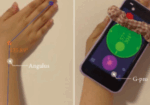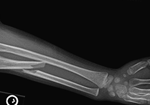Comprendre les CEU en ergothérapie
Que sont les CEU et pourquoi sont-ils importants ?
Les unités de formation continue (UFC) constituent la pierre angulaire du développement professionnel des ergothérapeutes. Elles permettent aux praticiens de se tenir informés des évolutions des méthodes thérapeutiques, des avancées de la recherche et des normes éthiques. L'obtention de ces UFC permet non seulement de satisfaire aux exigences d'autorisation d'exercer, mais aussi d'améliorer les compétences cliniques des ergothérapeutes et d'enrichir leur palette d'outils professionnels.
Dans le monde de la santé, les résultats pour les patients dépendent fortement des pratiques fondées sur des données probantes. En vous inscrivant à cours de formation continue en ergothérapie en ligne, les thérapeutes peuvent continuellement perfectionner leurs compétences et rester compétitifs dans un domaine en pleine croissance.

Exigences d'agrément de l'État pour les ergothérapeutes
Chaque État fixe ses propres exigences en matière de CEU, généralement comprises entre 12 et 36 heures de formation par cycle de renouvellement. Certains États, comme la Californie et la Floride, imposent des cours obligatoires spécifiques en éthique ou en droit. Pour éviter tout problème de conformité, consultez toujours le bureau des licences de votre État avant de vous inscrire à une formation.
Avantages de suivre des cours de formation continue en ergothérapie en ligne
Flexibilité et commodité de l'apprentissage en ligne
Les formations en ligne de formation continue offrent aux ergothérapeutes la liberté d'apprendre à tout moment et en tout lieu. Que vous travailliez à temps plein ou dirigiez un cabinet privé, ces cours s'intègrent parfaitement à votre emploi du temps. Vous pouvez mettre en pause, revenir en arrière et revoir les leçons à votre rythme, un luxe rarement offert dans les salles de classe traditionnelles.
Rapport coût-efficacité par rapport aux cours en personne
Les séminaires traditionnels peuvent coûter des centaines de dollars, sans compter les frais de déplacement et d'hébergement. Les plateformes de formation continue en ligne proposent des abonnements abordables ou des formules de paiement à la formation, facilitant ainsi l'accès à la formation continue. Certaines proposent même des formations continues gratuites ou des cours d'essai, permettant ainsi aux professionnels de réaliser des économies tout en répondant à leurs besoins de formation.
Rester au courant des normes et des meilleures pratiques de l'industrie
De l'intégration de la télésanté aux technologies d'assistance, le domaine de l'ergothérapie évolue rapidement. Les plateformes de formation continue en ligne permettent aux ergothérapeutes de se familiariser avec des sujets émergents et des techniques de pointe qui améliorent directement les résultats des patients et leur développement professionnel.
Comment choisir le bon fournisseur de CEU en ligne
Accréditation et approbation AOTA
Avant de vous inscrire, confirmez que le fournisseur est Approuvé par l'AOTA (American Occupational Therapy Association). L'accréditation garantit que le cours répond aux normes nationales de qualité et est accepté pour le renouvellement de la licence dans votre État.
Variété des cours et spécialisations proposées
Recherchez des plateformes offrant un large choix de formations continues (CEU) – de la pédiatrie à la gériatrie, en passant par la rééducation manuelle et la santé mentale. Cette diversité vous permet d'explorer vos centres d'intérêt ou d'approfondir votre expertise dans une spécialisation particulière.
Avis, notes et recommandations des pairs
Consultez systématiquement les avis des utilisateurs et les discussions de la communauté OT sur des plateformes comme Reddit ou les forums AOTA. Les avis des pairs révèlent souvent les avantages concrets et les inconvénients potentiels de certains fournisseurs de CEU.
Comparaison des meilleures plateformes de formation continue en ligne pour les ergothérapeutes
Plans tarifaires et options d'abonnement
Le choix d'une plateforme CEU est souvent une question de prix et de flexibilité. Certaines des meilleures cours de formation continue en ergothérapie en ligne proposent des modèles d'abonnement à plusieurs niveaux adaptés à tous les budgets. Les modèles d'abonnement sont idéaux pour les thérapeutes qui suivent plusieurs CEU chaque année, tandis que les options de paiement par cours conviennent à ceux qui recherchent occasionnellement des sujets spécialisés.
Formats de cours et expérience d'apprentissage
Le format d'apprentissage peut avoir un impact significatif sur l'engagement et la rétention des connaissances. Les plateformes de formation continue offrent généralement :
- Apprentissage par vidéo : Séances dynamiques dirigées par un instructeur pour les apprenants visuels.
- Modules basés sur du texte : Idéal pour les apprenants qui ont recours à une référence rapide et qui privilégient la lecture.
- Études de cas interactives : Résolution de problèmes appliquée pour relier la théorie à la pratique.
- Webinaires en direct : Interaction en temps réel avec des experts du secteur.
Délivrance de certificats et suivi de la formation continue
Des plateformes fiables de CEU génèrent automatiquement des certificats numériques à la fin de la formation. Nombre d'entre elles conservent également un enregistrement des crédits obtenus, vous permettant ainsi de vous préparer aux audits pour le renouvellement de votre licence d'État.
Sujets essentiels abordés dans les cours CEU en ligne
Thérapie de la main et rééducation des membres supérieurs
La rééducation de la main est l'une des spécialisations les plus recherchées en ergothérapie. Les formations de CEU dans ce domaine se concentrent sur les techniques avancées de traitement des blessures de la main et des membres supérieurs, notamment la réparation des tendons, les fractures, l'arthrite et la rééducation post-opératoire. Ces formations enseignent aux ergothérapeutes comment améliorer la motricité fine, la force et la dextérité tout en favorisant la récupération fonctionnelle des patients de tous âges. Les ergothérapeutes acquièrent des connaissances précieuses en matière d'attelles, de protection articulaire et d'interventions fondées sur des données probantes pour restaurer une fonction optimale de la main.
Soins gériatriques et à domicile
Face au vieillissement rapide de la population mondiale, les formations continues en gériatrie aident les ergothérapeutes à accompagner les personnes âgées dans le maintien de leur autonomie et de leur sécurité. Les cours couvrent la prévention des chutes, l'utilisation d'équipements adaptés et l'aménagement du domicile. Ces compétences essentielles préparent les ergothérapeutes à prodiguer des soins personnalisés en milieu de soins à domicile, en résidence services et en soins de longue durée.
Techniques de santé mentale et de réadaptation
Les formations continues en santé mentale explorent des stratégies pour traiter des pathologies telles que l'anxiété, la dépression et les troubles liés aux traumatismes. Les thérapeutes apprennent la communication thérapeutique, la modulation sensorielle et les approches cognitivo-comportementales pour améliorer la régulation émotionnelle et le rétablissement. Ces formations permettent aux ergothérapeutes d'intervenir efficacement dans divers contextes, notamment en psychiatrie et en centres de réadaptation ambulatoires.
Pratique fondée sur des données probantes en ergothérapie
Les formations continues en pratiques fondées sur des données probantes encouragent les ergothérapeutes à intégrer les dernières recherches à la prise de décision clinique. Ces formations enseignent aux ergothérapeutes comment évaluer les études, interpréter les données et appliquer les données probantes aux plans de traitement quotidiens. En fondant leurs interventions sur des méthodologies éprouvées, les ergothérapeutes peuvent garantir des soins cohérents, éthiques et efficaces à leurs patients.
Comment maximiser l'apprentissage grâce aux cours CEU en ligne
Fixer des objectifs professionnels clairs
Avant de vous inscrire, identifiez vos objectifs d'apprentissage. Souhaitez-vous vous spécialiser en rééducation de la main ou perfectionner vos compétences en soins pédiatriques ? Adopter une approche axée sur les objectifs garantit que vos CEU correspondent à vos aspirations professionnelles à long terme.
Application des connaissances à des scénarios du monde réel
Après avoir terminé chaque module, appliquez les nouvelles techniques en milieu clinique. Cette pratique renforce la rétention et renforce la confiance.
Réseautage avec d'autres ergothérapeutes en ligne
Rejoignez des forums en ligne, des groupes de discussion et des webinaires CEU pour vous connecter avec vos pairs.
Erreurs courantes à éviter lors du choix des cours CEU
Ignorer les normes d'accréditation
Ne présumez jamais que tous les cours de formation continue en ligne sont accrédités. Vérifiez toujours si le cours est approuvé par AOTA ou votre conseil des licences d'État pour garantir que cela compte pour le renouvellement de la licence.
Choisir la quantité plutôt que la qualité
Bien qu'il puisse être tentant de choisir des formations moins chères ou plus courtes pour obtenir rapidement des crédits, un apprentissage de qualité offre de meilleurs avantages à long terme. Privilégiez les formations fondées sur des données probantes et évaluées par des pairs.
Ne pas suivre correctement les crédits CEU
La tenue à jour de la documentation des CEU est essentielle lors des renouvellements de licence ou des audits. Utilisez les outils de suivi des CEU de la plateforme ou créez une feuille de calcul personnelle pour rester organisé.
FAQ sur les cours de formation continue en ergothérapie en ligne
Les cours CEU en ligne sont-ils acceptés par tous les conseils d’État ?
La plupart des États acceptent les formations CEU en ligne, à condition qu'elles soient approuvées par l'AOTA ou qu'elles répondent aux exigences spécifiques de l'État. Vérifiez toujours auprès de votre organisme d'agrément avant de vous inscrire.
De combien d’UFC les ergothérapeutes ont-ils besoin par an ?
Les exigences varient selon l’État, mais la plupart des ergothérapeutes ont besoin de 12 à 36 CEU tous les un à deux ans pour renouveler leur licence.
Puis-je compléter tous mes CEU en ligne ?
Oui, de nombreux États autorisent désormais les CEU en ligne 100%, en particulier depuis l’expansion de la télésanté et de l’apprentissage numérique après 2020.
Les cours CEU gratuits sont-ils légitimes pour le renouvellement de licence ?
Les cours gratuits peuvent être légitimes s'ils sont dispensés par des établissements accrédités ou des organismes agréés par l'AOTA. Cependant, vérifiez toujours l'accréditation avant de vous inscrire.
Comment puis-je vérifier si un fournisseur de CEU est approuvé par l'AOTA ?
Visitez le Répertoire des fournisseurs agréés par l'AOTA ou consultez le site Web du fournisseur pour connaître son numéro d'approbation et ses dates de validité.
Conclusion : Investissez dans votre croissance grâce aux CEU en ligne
Le domaine de l'ergothérapie repose sur l'apprentissage continu. S'inscrire cours de formation continue en ergothérapie en ligne Permet aux professionnels de garder une longueur d'avance dans un environnement médical en constante évolution. Que vous souhaitiez renouveler votre licence, vous spécialiser dans un nouveau domaine ou simplement vous tenir informé, une plateforme de formation continue en ligne adaptée peut propulser votre carrière et améliorer les résultats pour les patients.
Alors passez à l’étape suivante : choisissez un fournisseur approuvé par l’AOTA, définissez des objectifs d’apprentissage clairs et commencez dès aujourd’hui votre parcours vers la maîtrise professionnelle.
Plus à lire
Traitement sensoriel chez les personnes atteintes ou non de tendinopathie
Emilee Sanders, OTS Traitement sensoriel chez les personnes avec et sans tendinopathie : une revue systématique avec méta-analyse des sites locaux, régionaux et distants dans les affections des membres supérieurs et inférieurs Rio, E, Sandler, J., Cheng, K., Moseley, GL, Cook, J., & Girdwood, M. (2021) Traitement sensoriel chez les personnes avec et sans tendinopathie : une revue systématique avec méta-analyse…
En savoir plusL'identification des applications mobiles pour la réadaptation des fractures du radius distal.
Par Taylor Landholm Chen, Y., Yu, Y., Lin, X., Han, Z., Feng, Z., Hua, X., Chen, D., Xu, X., Zhang, Y. et Wang , G. (2020). Outils intelligents d'aide à la réadaptation pour les fractures du radius distal : une revue systématique basée sur la littérature et les magasins d'applications mobiles. Méthodes informatiques et mathématiques en médecine, 2020, 7613569. https://doi-org.methodistlibrary.idm.oclc.org/10.1155/2020/7613569 The Skinny The…
En savoir plusThérapie de la main : prise en charge conservatrice des fractures pédiatriques de Monteggia
Prise en charge conservatrice des fractures de Monteggia pédiatriques Les fractures de Monteggia chez l'enfant comprennent environ 21 TP3T des fractures du coude pédiatriques et impliquent une fracture de l'ulna proximal avec luxation de la tête radiale (Fig. 1). La principale préoccupation des fractures de Monteggia comprend le traitement (traitement pédiatrique des fractures de Monteggia) et la relocalisation de la tête radiale, car si elle est laissée…
En savoir plus5 activités de retour à la cuisine (qui ne nécessitent pas de cuisine)
La thérapie de la main peut et doit être très axée sur le travail. Chaque semaine, nous entendons des commentaires de patients qui confirment cette affirmation : « Je dois retourner au travail » « Je veux juste rejouer au golf » « Je ne peux même pas ouvrir une bouteille d'eau » « Mon conjoint doit faire tout ce qui est nécessaire ». la cuisine » Bien que les exercices standards soient utiles, c'est…
En savoir plusInscrivez-vous pour recevoir des mises à jour directement dans votre boîte de réception !
Inscrivez-vous avec nous et nous vous enverrons régulièrement des articles de blog sur tout ce qui concerne la thérapie des mains, des notifications chaque fois que nous mettons en ligne de nouvelles vidéos et tutoriels, ainsi que des documents, des protocoles et d'autres informations utiles.






